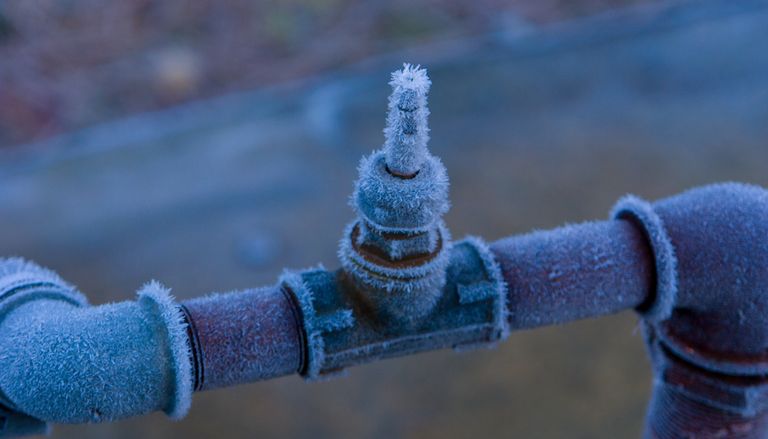Protect Against Frozen Pipes in Winter: Pro Strategies
Protect Against Frozen Pipes in Winter: Pro Strategies
Blog Article
Almost everyone seems to have their private rationale when it comes to Prevent Frozen Pipes .

Cold weather can ruin your pipes, especially by freezing pipes. Here's just how to prevent it from taking place and what to do if it does.
Introduction
As temperatures decrease, the threat of frozen pipes rises, potentially causing pricey repairs and water damage. Recognizing exactly how to avoid icy pipes is critical for home owners in cold environments.
Recognizing Icy Pipes
What creates pipes to freeze?
Pipelines freeze when exposed to temperatures listed below 32 ° F (0 ° C) for expanded durations. As water inside the pipes ices up, it broadens, putting pressure on the pipeline walls and possibly causing them to break.
Risks and problems
Icy pipelines can cause water system disturbances, residential property damages, and expensive fixings. Ruptured pipelines can flood homes and create comprehensive structural damages.
Signs of Frozen Pipeline
Identifying icy pipes early can stop them from rupturing.
Exactly how to determine frozen pipes
Seek lowered water flow from faucets, unusual odors or sounds from pipelines, and visible frost on revealed pipelines.
Prevention Tips
Shielding prone pipelines
Wrap pipes in insulation sleeves or make use of heat tape to protect them from freezing temperature levels. Focus on pipelines in unheated or exterior areas of the home.
Heating methods
Maintain indoor spaces properly heated up, particularly areas with plumbing. Open closet doors to enable warm air to flow around pipelines under sinks.
Securing Exterior Pipes
Garden hose pipes and outdoor taps
Detach and drain yard tubes prior to winter. Install frost-proof spigots or cover exterior taps with shielded caps.
What to Do If Your Pipelines Freeze
Immediate actions to take
If you think icy pipelines, maintain taps available to eliminate pressure as the ice melts. Utilize a hairdryer or towels soaked in warm water to thaw pipelines gradually.
Long-Term Solutions
Architectural adjustments
Take into consideration rerouting pipes away from outside walls or unheated areas. Include additional insulation to attic rooms, cellars, and crawl spaces.
Upgrading insulation
Buy premium insulation for pipelines, attics, and wall surfaces. Appropriate insulation helps preserve regular temperature levels and decreases the risk of frozen pipes.
Verdict
Preventing icy pipes requires aggressive steps and quick feedbacks. By understanding the reasons, signs, and preventive measures, house owners can shield their pipes throughout cold weather.
5 Ways to Prevent Frozen Pipes
Drain Outdoor Faucets and Disconnect Hoses
First, close the shut-off valve that controls the flow of water in the pipe to your outdoor faucet. Then, head outside to disconnect and drain your hose and open the outdoor faucet to allow the water to completely drain out of the line. Turn off the faucet when done. Finally, head back to the shut-off valve and drain the remaining water inside the pipe into a bucket or container. Additionally, if you have a home irrigation system, you should consider hiring an expert to clear the system of water each year.
Insulate Pipes
One of the best and most cost-effective methods for preventing frozen water pipes is to wrap your pipes with insulation. This is especially important for areas in your home that aren’t exposed to heat, such as an attic. We suggest using foam sleeves, which can typically be found at your local hardware store.
Keep Heat Running at 65
Your pipes are located inside your walls, and the temperature there is much colder than the rest of the house. To prevent your pipes from freezing, The Insurance Information Institute suggests that you keep your home heated to at least 65 degrees, even when traveling. You may want to invest in smart devices that can keep an eye on the temperature in your home while you’re away.
Leave Water Dripping
Moving water — even a small trickle — can prevent ice from forming inside your pipes. When freezing temps are imminent, start a drip of water from all faucets that serve exposed pipes. Leaving a few faucets running will also help relieve pressure inside the pipes and help prevent a rupture if the water inside freezes.
Open Cupboard Doors
Warm your kitchen and bathroom pipes by opening cupboards and vanities. You should also leave your interior doors ajar to help warm air circulate evenly throughout your home.

I'm certainly very intrigued by 6 Ways to Prevent Frozen Pipes and I am hoping you enjoyed reading the new page. Sharing is good. You won't know, you may just be doing someone a favor. Thanks for your time. Revisit us soon.
Request An Appointment Report this page